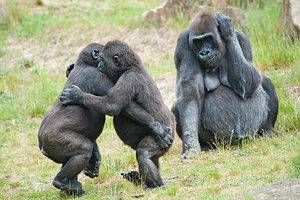Gorillas are extraordinary animals who are affectionate and playful and form close relationships. Knowing the differences between male vs. female gorillas can be helpful, and it can help you understand some of their behaviors.
It’s hard to tell the difference between male and female gorillas until they are about eight. Until that age, both sexes are about the same size, and there aren’t physical differences besides genitalia.
Once gorillas mature, their physical characteristics change, giving them identifiable differences from the opposite sex. They also exhibit different behaviors from one another, helping observers tell the difference.
Comparing Male vs. Female Gorillas
| Gender | Head Shape | Size | Offspring Care | Color | Diet |
|---|---|---|---|---|---|
| Male | Cone-shaped and massive | 300-500 pounds and up to 6 feet tall | Socializes with offspring and promotes the rest of the troop to accept them | Mostly brown with silver hair on their backs | Leaves, stems, herbaceous plants, fruit |
| Female | Significantly smaller, although still massive | 150-200 pounds and up to 4.5 feet | Care for their infants, nursing them for years and carrying them in their hands for months | Mostly brown | Leaves, stems, herbaceous plants, fruit, ants, termites |
The 9 Key Differences Between Male vs. Female Gorillas
1. Head Shape
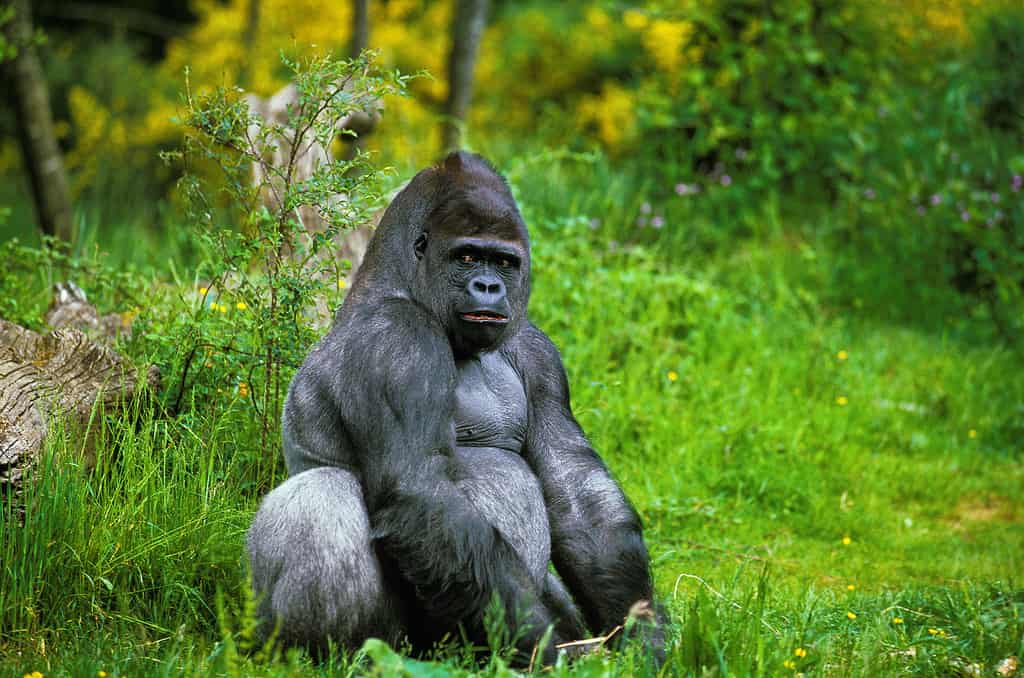
Male gorillas have cone-shaped heads because they have pronounced crests on their skull.
©slowmotiongli/Shutterstock.com
You can often tell the difference between a male and female gorilla by looking at their heads. An adult male gorilla typically has a cone-shaped head due to pronounced sagittal crests on their skull. Female gorillas also have these crests, but they aren’t as big or noticeable as a male’s.
2. Size

Male gorillas can be double the size of females.
©Windzepher/iStock via Getty Images
Male gorillas are much bigger than females, both in weight and height. With the western lowland gorilla, the smallest of this subspecies, a male averages 300-500 pounds, while a female only averages 150-200 pounds.
Males reach up to 6 feet tall, and females can get up to 4.5 feet tall. While these numbers apply to western lowland gorillas, all subspecies follow the same pattern of males being bigger than females.
3. Reproduction
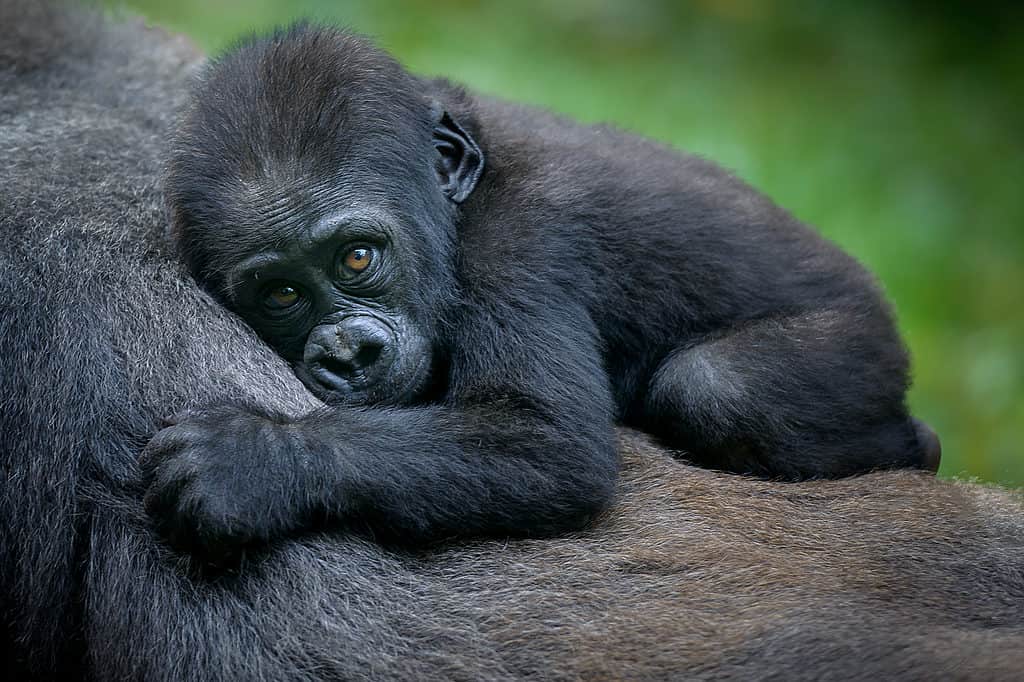
Male and female gorillas breed at different ages.
©Asaf Weizman/Shutterstock.com
Male gorillas reach sexual maturity later than females, with females reaching it between seven and eight years and males between 11 and 13 years. Although females can reach maturity at seven, they typically don’t breed until years later. Males also don’t father offspring right away, with most waiting until they are between 15 and 20 years old.
4. Social Structure
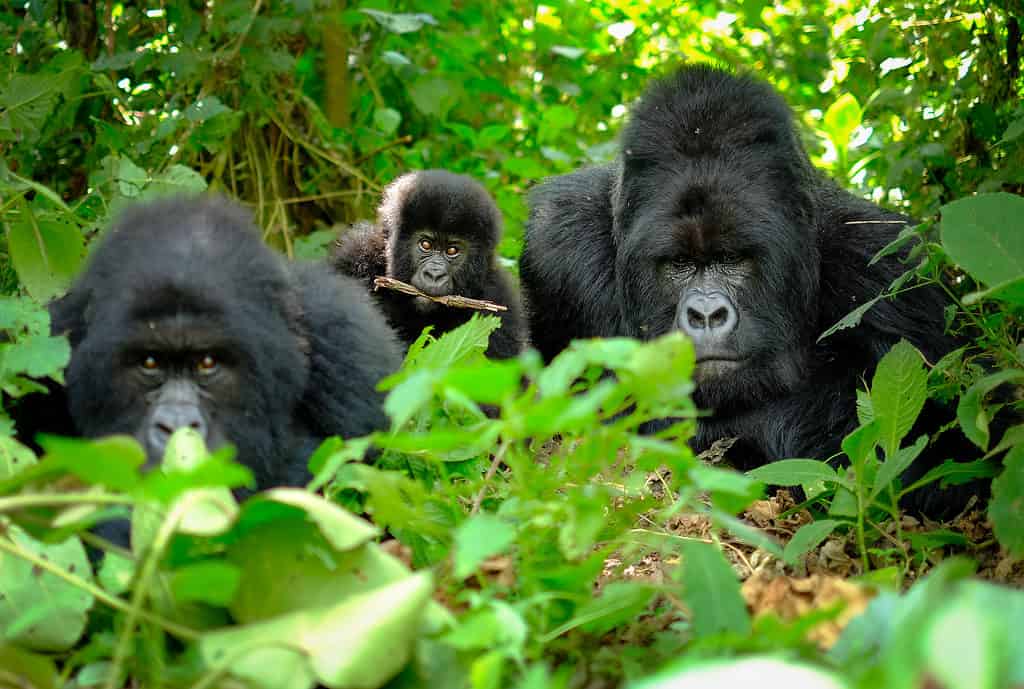
Male gorillas leave their original troop to lead another, while females typically leave theirs for reproduction purposes.
©Marian Galovic/Shutterstock.com
A male gorilla gradually distances himself from his troop until he’s alone, going a little further daily. He’ll typically stay alone until forming a troop with adult females and reproducing. On the other hand, females leave their troop around eight years old and join another troop for reproduction rather than to lead a group.
5. Offspring Care
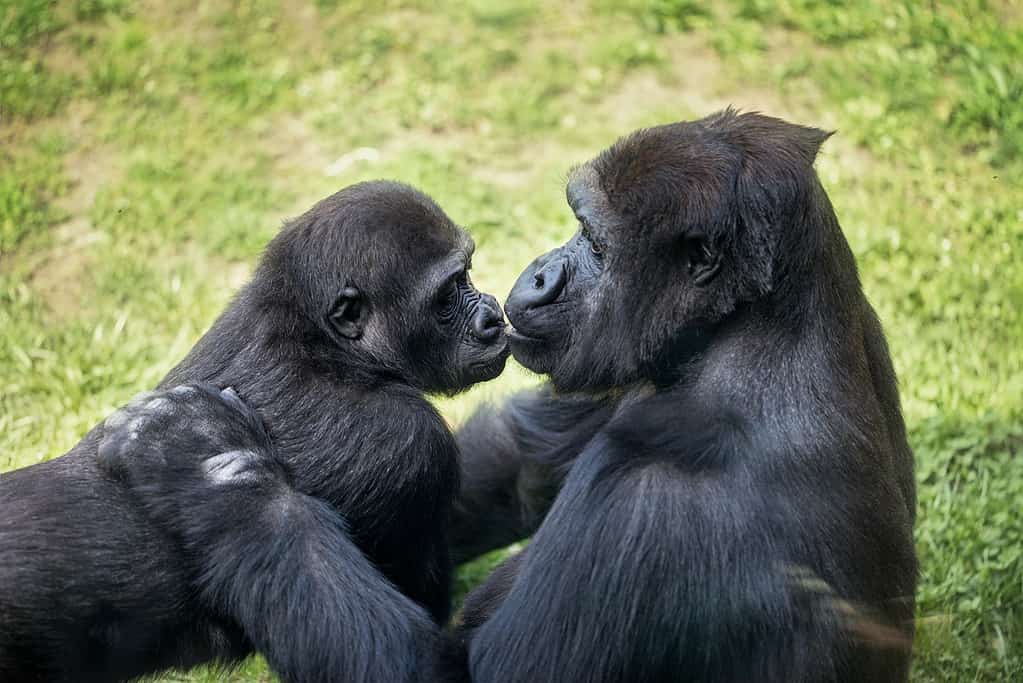
Female gorillas care for their offspring for years.
©LuckyBusiness/iStock via Getty Images
Female gorillas care for their infants and typically nurse them until they are between three and four. The mother carries the infant everywhere until it can walk around three or six months old.
Male gorillas generally don’t engage in caring for offspring, but they sometimes socialize with them. The male also encourages the rest of the troop to accept the infant and protects them from bullying.
6. Color
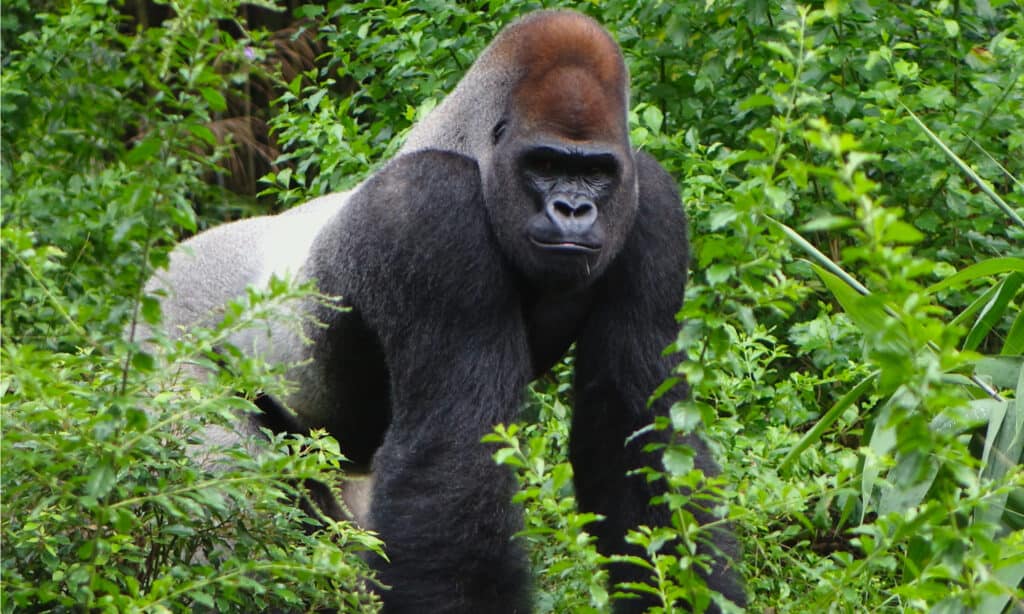
Adult male gorillas have silver hair on their backs, which gives them the name silverbacks.
©CXI/Shutterstock.com
Adult male gorillas are called silverbacks because they have silver hair on their backs that goes to their hips. On the other hand, women don’t have silver backs and instead have brown hair on all of their bodies except their faces, fingers and palms, soles, and armpits.
7. Grooming
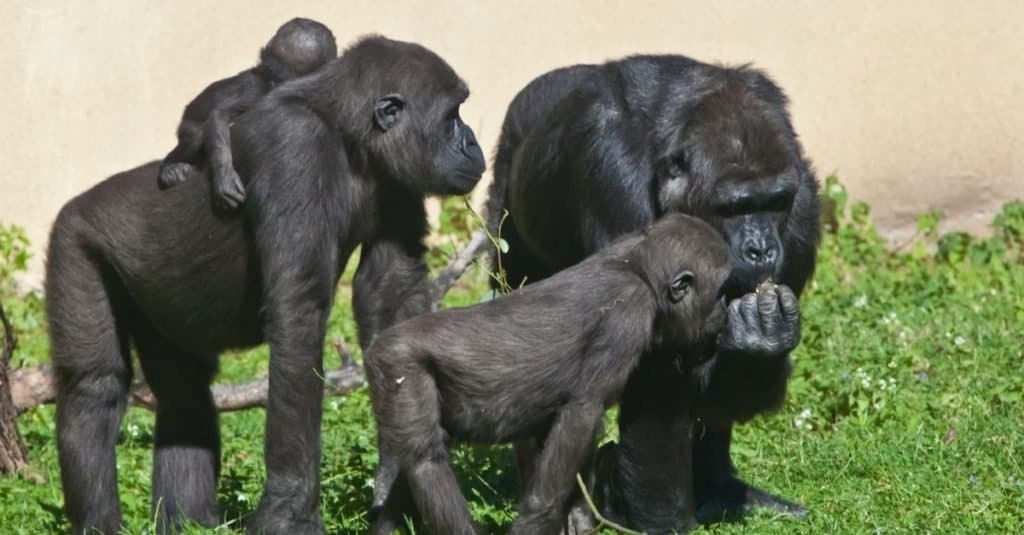
Female gorillas groom their offspring and the silverback of their troop.
©Mikhail Semenov/Shutterstock.com
Female gorillas are responsible for grooming. They not only groom themselves and their offspring, but they also groom the silverback.
8. Diet

Gorillas eat fruit and plants but sometimes supplement with ants and termites.
©iStock.com/miroslav_1
Gorillas eat leaves, stems, herbaceous plants, and fruit. Some gorillas also eat ants and termites, but it is more common for females than males. They generally don’t eat meat, and sightings of them doing so are rare.
9. Mate Selection

Male gorillas sometimes fight to win a mate, but other times, they form bachelor herds.
©Pakalou/Shutterstock.com
Male gorillas will stay alone or join bachelor herds (groups of other males) until they find or establish a breeding unit. It sometimes takes years before they find a troop. Females, however, immediately join a new troop or a single male rather than being solitary.
The photo featured at the top of this post is © Jiri Fejkl/Shutterstock.com
Thank you for reading! Have some feedback for us? Contact the AZ Animals editorial team.




